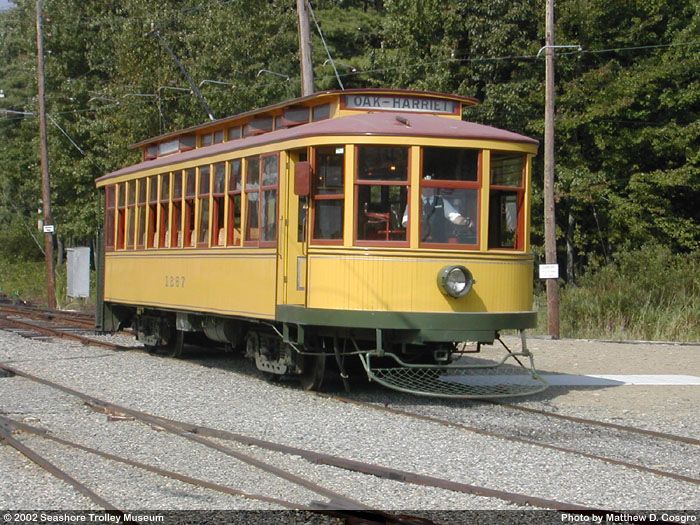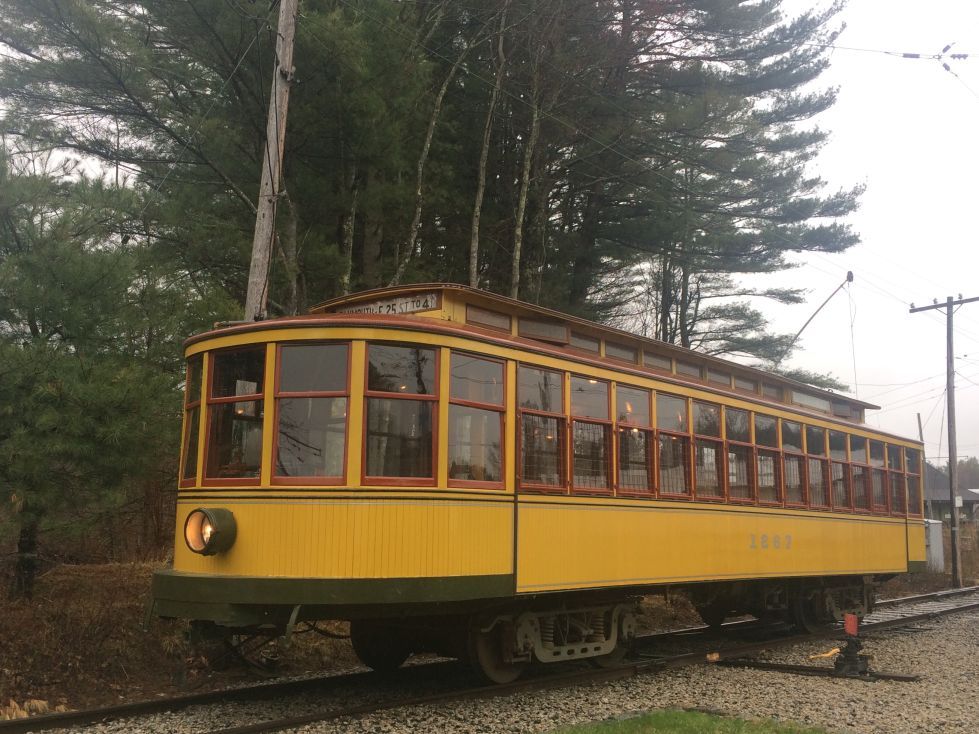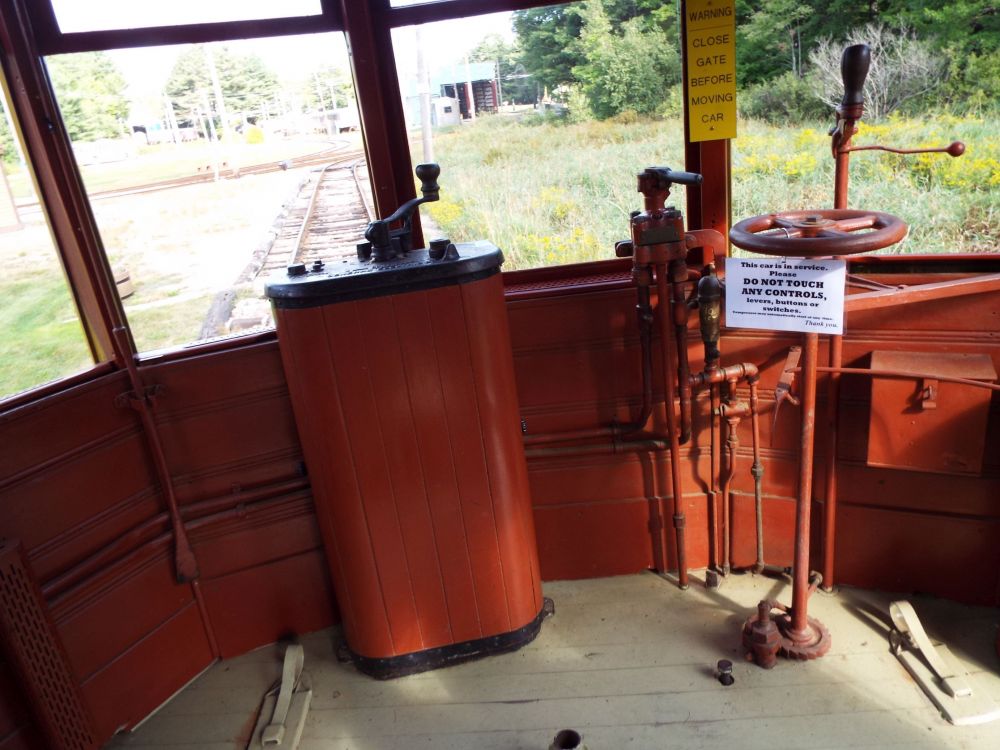
Matthew D. Cosgro in 2002
- Builder
- Transit Supply Co.
- Description
- Twin City Class H-6, 'Gate Car'
- Secondary Use
- None
- Type
- City and Suburban Streetcars
- Year
- 1907
- Retired from Service
- 1953
- Acquired by the Museum
- 1953
- Note
- No. 1267 is in operating condition and is used in restricted service.
- Fund
- 764
Twin City Rapid Transit Co. 1267
From Minneapolis-St. Paul, Minnesota
History
Twin City Rapid Transit (also known as Twin City Lines) was formed in 1891 in the merger of the streetcar systems of Minneapolis and St. Paul. TCRT decided that the various streetcar builders could not produce cars to withstand Minnesota’s severe winters. So, between 1898 and 1917, Twin City Rapid Transit’s own shops, using the name Transit Supply Co., built 1140 cars for its fleet, producing the nation’s largest home-built trolley fleet. TCRT began acquiring new PCC cars in 1945, but older cars continued operating. In the early 1950s, the company decided to rapidly convert to buses. The last streetcar ran in 1954.
Twin City Rapid Transit built No. 1267 at its Snellings Shops in St. Paul in 1907. No. 1267 is a “gate car” which was a prominent type of car in Minneapolis and St. Paul. It takes its name from folding wire gates instead of doors where passengers entered at the rear of the car. The company later replaced the gates with doors on most of its “gate cars” but not on No. 1267. No. 1267 is one of the widest cars ever built for street use, measuring 9 ft. 2 ½ in. across the sills. In 1928, TCRT rebuilt No. 1267 with roller bearing trucks, electric heat and a narrow passenger exit door at the front of the car in place of a high level motorman’s access door. The car ran on a variety of lines. After 1946, it ran on the University of Minnesota inter-campus route. Some of the “gate cars” continued operating until Twin City ended streetcar service.
Twin City Rapid Transit donated No. 1267 to Seashore in 1953, the day after its last run. No. 1267 was Seashore’s first car acquired under the National Collection strategy. Between 1987 and 1993, Seashore completely restored the car to its 1915 appearance, including removing the front passenger exit and reinstalling the motorman’s door. Museum member Doug Anderson sponsored and did much of the work on this restoration. Supporters included former President George H. W. Bush. After the restoration, Seashore used the car in regular service. Unfortunately, water penetrated the new wood siding which had to be replaced later. In 2016, Seashore restored the car’s gate mechanism.
Technical Information
- Seats: 48
- Control: K-43F2
- Brakes: Straight Air
- Compressor: CP-21
Trucks
- Number: 2
- Manufacturer: TCL
- Model: 9RB
Motor
- Number: 4
- Manufacturer: General Electric
- Model: 203
Weight and Dimensions
- Length: 46’
- Width: 9’ 2.00"
- Height: 12’
- Weight: 45006 lbs.
Additional Images

Katie Orlando on 05/03/19

Matthew D. Cosgro in 2002

Matthew D. Cosgro in 2002

Kenyon F. Karl on 09/10/16

Dave Mewhinney at newdavesrailpix.com
© 1998 - 2026 New England Electric Railway Historical Society. All Rights Reserved.